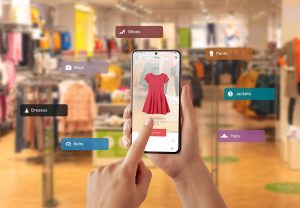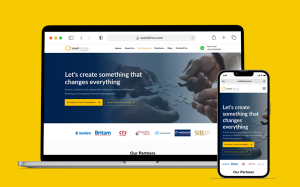Originally posted on Twitter by Katelyn Bourgoin
- TRIGGER EVENTS
Every purchase begins with a trigger event. It’s the moment a buyer realizes they may need a new solution. Trigger events can be:
- Biological (eg. Being hungry)
- Situational (eg. Getting engaged)
- Emotional (eg. Feeling jealous)
- Social (eg. Fight with spouse)
When you discover your customers’ trigger events, you can market smarter. You can get in front of people sooner, in less crowded channels, with better messages.
- DISTINCTIVENESS
We’re more likely to notice stuff that stands out from the rest.
Differentiate (or die)!
- MERE EXPOSURE EFFECT
The more we see something, the more we come to like and trust it. That’s why prolific marketers expertly repurpose their content so they show up consistently in the places their buyers hang out.
Show up consistently.
- STATUS QUO BIAS
We are resistant to change and prefer the known to unknown. That’s why smart marketers use stats, facts and stories to jolt readers into realizing that sticking with the status quo is risky.
Show the risk of doing nothing.
- SOCIAL CURRENCY
We’re more likely to share stuff that makes us look good to others.
Make sharing gratifying.
- THE BARNUM EFFECT
We’re drawn to statements that feel personal (even if they could actually apply to anyone). That’s why world-class writers like to ask Barnum-style Questions which is a psychological phenomenon in which individuals are asked questions relating to their personality – which are supposedly tailored to them – as having high levels of accuracy. In reality, the questions and descriptions are vague and can be applied to a wide range of people.
Make it feel personal.
- PRIMING
We’re unconsciously influenced by even small details. For example, you could use imagery on your sales page that primes visitors to connect customer discovery with better marketing and increased sales.
Prime people to buy.
- FRAMING
How something is presented very much impacts our perception of it.
Frame your offer carefully.
- ANCHORING
The first piece of information we see often sets our expectations.
Use anchors strategically.
- AUTHORITY BIAS
We’re more trusting of authority figures (eg. doctors, celebrities, media).
Showcase your authority.
- FOOT-IN-DOOR TECHNIQUE
We’re more likely to agree to a bigger request after already agreeing to a small one. This is why product-led growth experts suggest letting prospects try your product for free *before* committing.
Start with a small ask.
- SOCIAL PROOF
We’re more trusting of stuff that other people already trust. That’s why smart marketers pepper their newsletter signup pages with glowing testimonials and headshots of well-known marketers.
Let others sell for you.
- SCARCITY
We place a higher value on things when they’re in limited supply. For example, when Apple releases a new product they limit the number available so that they create a buying frenzy.
Reducing availability can drive demand.
- BANDWAGON EFFECT
We’re more likely to do something if everyone else is doing it. For example, in 1957 McDonald’s started showing how many customers they’d served on their signs. Today, McDonald’s serves 62M customers PER DAY!
Showcase popularity.
- LOSS AVERSION
We’re more motivated to avoid losses than we are to receive gains. For example, Amazon highlights the savings people could *lose* when they cancel their Prime membership to deter them from canceling.
Highlight what’s at stake.
- RELATIVITY
We struggle to understand the value of a purchase without something to compare it to. For instance, Costco puts the TVs & laptops near the entrance. Seeing how cheap big-ticket items are makes other products appear cheaper too.
Use contrast to show value.
- DELIGHT
When we receive unexpected value we feel intense joy.
Deliver surprise value.
- IKEA EFFECT
We place very high value on things that we had a hand in creating. For example, Canva makes it extremely easy to create your first design by providing 1000s of templates. They help regular people feel like world-class designers.
Co-create with users.
- PEAK-END RULE
We judge an experience by its peak moment and how it ends. For instance, Disney carefully crafts the experience to deliver high peaks and positive ends for guests—so they forget the crowds or hours spent waiting in lines.
Create positive peaks/ends.
I’ve spent 1500+ hours learning about cognitive biases and heuristics (AKA the stuff that drives *your customers* to buy)
— Katelyn Bourgoin 🧠 (@KateBour) January 5, 2022
Here are the top 19 concepts that marketers need to know:
*****
Shupav Group is supporting business owners to build and scale successful brands in Africa. We do this through pioneering Digital Marketing, PR & Communications, and Sales Enablement solutions. www.shupav.com











